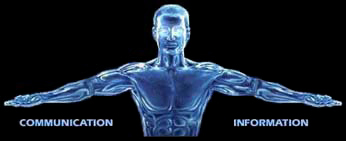Introduction
We encourage you to verify the source images for yourself, rather than just simply accept the facts that are presented here.
Exact details of the used image templates can be found here.
Some reports on this website are based on previous ones. So it is extremely important to read the reports in chronological order.
Details can turn up that were probably already been analyzed in detail. If you are new here and you directly start reading the
recent reports without prior knowledge, then it could happen that the required context is not recognizable.
You do yourself and us a favor when you first start with the oldest reports.
This is the first analysis report regarding the Concepcion crater. There are no previous reports. You can continue to read here.
The Mars Rover Opportunity
In 2003, NASA launched the space mission, "Mars Exploration Rovers" (MER). Two launchers, each
with a rover, were sent out to Mars, in order to examine the surface and geology of Mars.
The two rovers have been christened with the names Spirit (MER-A) and Opportunity (MER-B).
The mission plan can be now considered as a great scientific success.
Both rovers have exceeded their planned operation time and have provided many new insights about Mars.
Due to persistent technical problems, NASA has given up the communication with the Spirit (MER-A) on 25 May 2011,
Opportunity, however, is still on the road and provides interesting images and measurement data from the Martian surface.
A Martian day is longer than an Earth day. It is exactly 24 hours, 39 minutes and 35 seconds. For the labeling
of an extra-terrestrial planet day the term SOL came in use. Thus, the images of the rovers
are marked with the respective SOL-time.

Click on image to enlarge
The assembly of both rovers is identical. Each of them is equipped with several camera systems that were built for various purposes:
The Panoramic Camera (Pancam) - Used to determine the texture, color, mineralogy and structure of the local terrain. Actually,
this camera system consists of two high-resolution color CCD cameras
 ,
mounted as a stereo pair at a distance of 30 centimeters on a swinging arm at a height of 1.50 m.
The arm can rotate 360 degrees around and allows a complete panoramic view. ,
mounted as a stereo pair at a distance of 30 centimeters on a swinging arm at a height of 1.50 m.
The arm can rotate 360 degrees around and allows a complete panoramic view.
A Navigation Camera (Navcam) - It has a larger field of view, but a lower resolution
and can create monochrome images only. It is specifically designed for navigation of the rover, and also has been implemented
with a stereo pair camera system.
Four Hazard Avoidance Cameras (Hazcams) - They are attached at the lower front and rear of the rover. These cameras
serve as a protection system to obtain an accurate view of the position of the rover, if it encounter unforeseen obstacles.
The cameras also have a relatively wide field of view. They are directly installed into the body of the rover, so
a view angle control of these cameras is not possible.
The First Indications of Anomalies - Sculpted Stone Blocks
The transmitted images of the two Mars rovers are accessible to the public through the Internet . Of course, these
images have been examined by relevant known research groups and individuals for evidences of extraterrestrial artifacts.
Numerous structural abnormalities have been identified, but the most of these anomalies have become known more likely
via the tabloid press and Internet blog sites.
The image shown below was made by Mars Rover Opportunity's panoramic camera on Sol 2161. It shows an enlarged
image section of the original recording, which forms the basis for subsequent investigations. More details of where the
original images can be downloaded, can be found on this Website in the project area under
Image Templates.
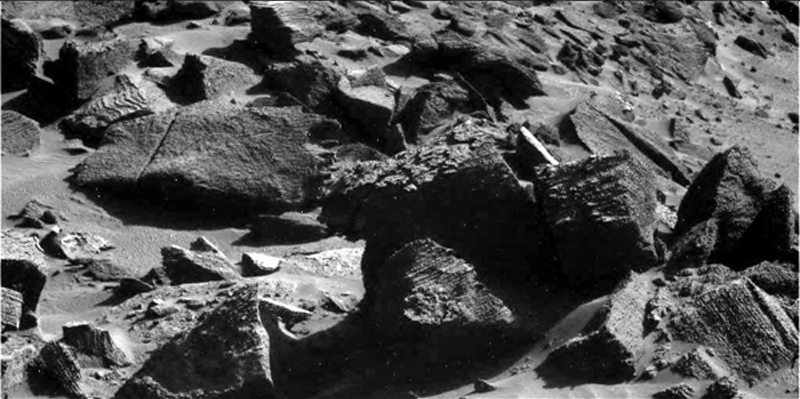
Click on image to enlarge
The interest concerning these images came about by chance and was awakened by a forum post made by the user "qmantoo"
on the Internet Forum of alien anomalies . At first sight
just a collection of different sized rocks can be recognized on the recording, but on closer inspection
this recording turns out to be treasure trove of amazing structural anomalies.
Noteworthy in this case is the shape of several blocks of stone. Recognizable are geometric structures
lying half buried in the ground. Some of these blocks seem to have also the same size and shape and there is a
large number of right angles and straight sides within this small image section. This may
be unusual, but taken alone, it is far too vague to speak here of artificial processing.
It is not excluded, that natural processes can produce a haphazard pile of rocks with straight
rough edges and square corners.
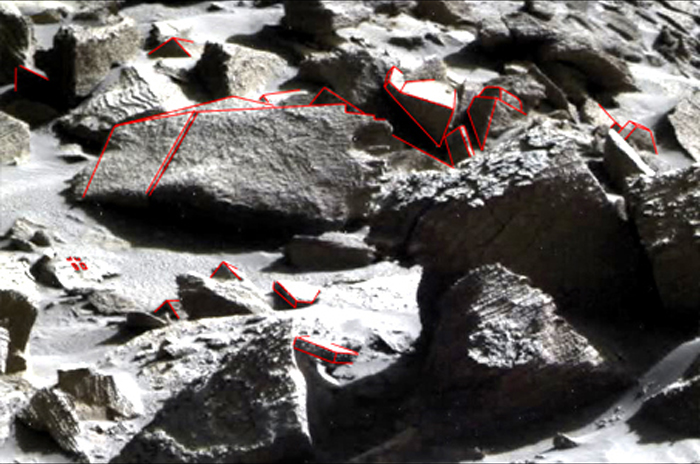
Click on image to enlarge
Crucial for the forum posting, however, was a structural anomaly that can be seen in the following image in the detail.
Amidst these stone blocks there is one stone block where odd-shaped structures appear to stand.
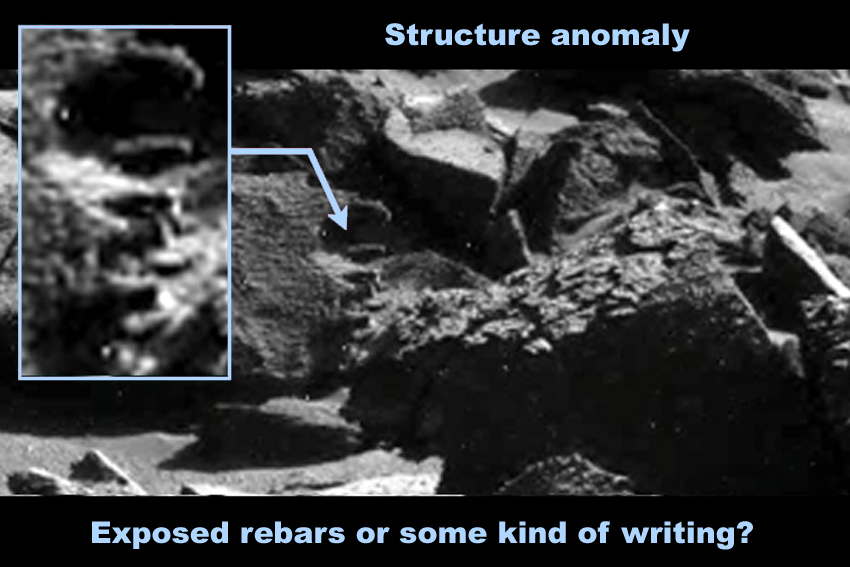
Click on image to enlarge
If you have these structural abnormalities exactly in the field of vision, it is not difficult to identify the outlines of each structure.
However, it is still hard to determine what exactly we have here.
As these abnormal structures seems to be all lined up in a line appearence, it is doubtful whether this has been the product
of purely natural processing. A possible guess is that rebars may protrude out of a broken concrete object.
The most astonishing details, however, are between these geometric stone blocks. The magnification of the following image section
shows two stone sculptures. A stone head with human-like countenance and an animal-like stone head.
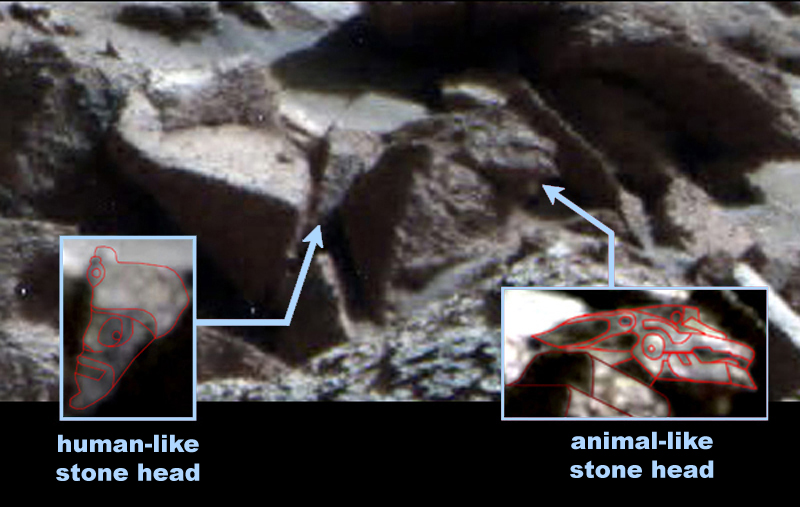
Click on image to enlarge
It is symptomatic for the human brain, trying to recognize logical shapes, such like faces, whithin random chaotic patterns.
The effect is similar to the association game, which often occurs during prolonged viewing of cloud formations. According
to this we must carefully examine, wether the structural abnormalities show a logic that may indicate an artificial process and
an artistic intention, or whether perhaps natural circumstances, such like a play of light and shadow, can cause an illusion and
a misinterpretation.
Details in Focus - The Dragon Head
The magnification of the animal-like stone head shows clearly striking depressions and elevations on the stone object.
Dark areas represent depressions in the stone and light areas the parts which occur more outward.
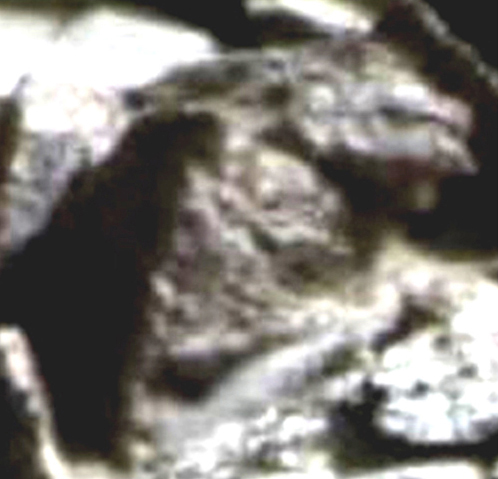
Detail enlargement of the animal-like stone head
An allocation of anatomical features is relatively quickly possible here. Clearly visible is the circular notch, which shows in
its midst another bright spot that is located like a pupil in the center of an eye. At the rear is a depression that is similar
in its shape to a long oval, and which gives the impression of a sharp tapering long ear. The front of the stone object
reveals another thin, dark area, which again shows a deepening and thereby allows the assignment of a slightly open mouth.
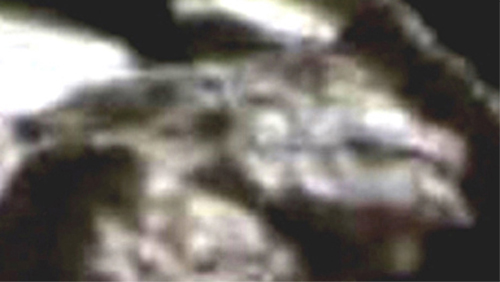
Depiction of a dragon head
Considering the animal-like stone head with all its features, then a similarity can be detected with stone figures, found in many cultures
around the world. Based on our previous research where we have cataloged a number of mythological beings, this animal-like stone head can
be classified in the category of depictions of dragons. An interpretation of the style of presentation in this report, however, should not
be anticipated, but done in a subsequent report.
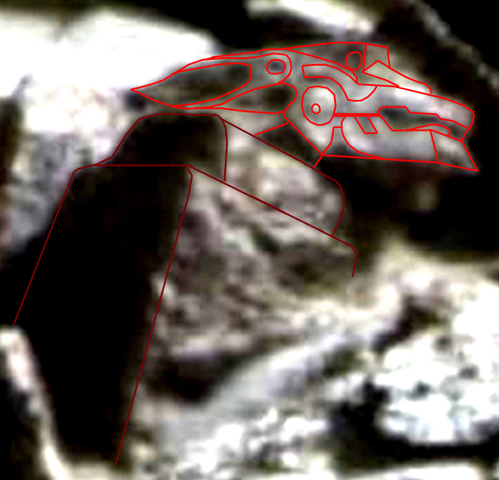
Highlighting and tracing the contours
The highlighting of the contours shows that impressive details are present within this stone structure.
Can a random stone structures take the form of a stylized dragon figure? Ironically of an mythical creature, which
we have already encountered in previous reports?
Can a random stone formation come up with anatomical features, which are arranged in their correct positioning?
In itself such a coincidence would be quite possible, however, with each additional structural anomaly, the probability
rises that we have here artificially created objects.
Details in Focus - A Human-like Face
Directly to the left of the dragon-like head is a more remarkable structure anomaly. The shaping, which is visible here, gives the
impression of a carved stone sculpture, which resembles the appearance of a human-like head.
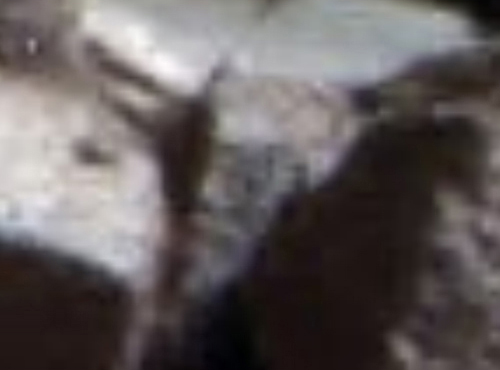
Enlarged image section
A salient feature is the outline of a large eye zone, which shows a central black dot, like a pupil of an eye.
Moreover, it seems the head is equipped with a big hat or a kind of expansive crown, whose edges clearly stand out from the facial area.
Also here one can find at the anatomically correct places features like a nose, a mouth and a pointed chin. Because of the present
incidence of light, especially the right of the face is illuminated, the other part is in shadow. This may be partly due to the fact
that we see the face not from a frontal view, but from the side. However, the shadowed side is not completely obliterated. If we brighten
this area, it reveals the outlines of the second eye.

Indications of outlines of the second eye
So it's not just one side of the face that is visible here, but also a part of the opposite side. This fact allows the search for further
hints that points to the artificiality of this object. By tracing the recognizable contours and outlines, the figure indicates the very artfully
looking depiction of a human-like face with some kind of headdress.
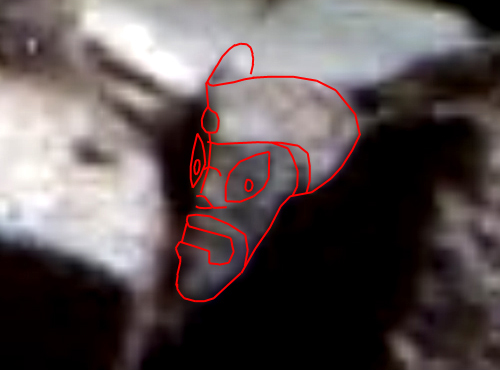
Highlighting of the contours
Another important indicator that speaks for the artificial nature of this stone head can be illustrated by the
representation of the symmetry points. The underlying logic should be demonstrated by the following example
on an earthly stone head that corresponds to a sculpture presentation of the Egyptian pharaoh Amenhotep III.
The orientation of the stone head is positioned similarly to the template from Mars.
Also, the level of detail is accordingly adjusted in order to create similar conditions.
The procedure is relatively simple. A vertical line is drawn that divides the head into two equal halves.
It is sufficient here to use two orientation points to draw such a line. The first point is located exactly on the forehead between
the eyes. At this place it is rather easy to make up the center of the face. The second point can be made on the chin or
the lips. Here, too, it is relatively easy to determine the center. The line along the two reference points
divides the face into two equal halves.
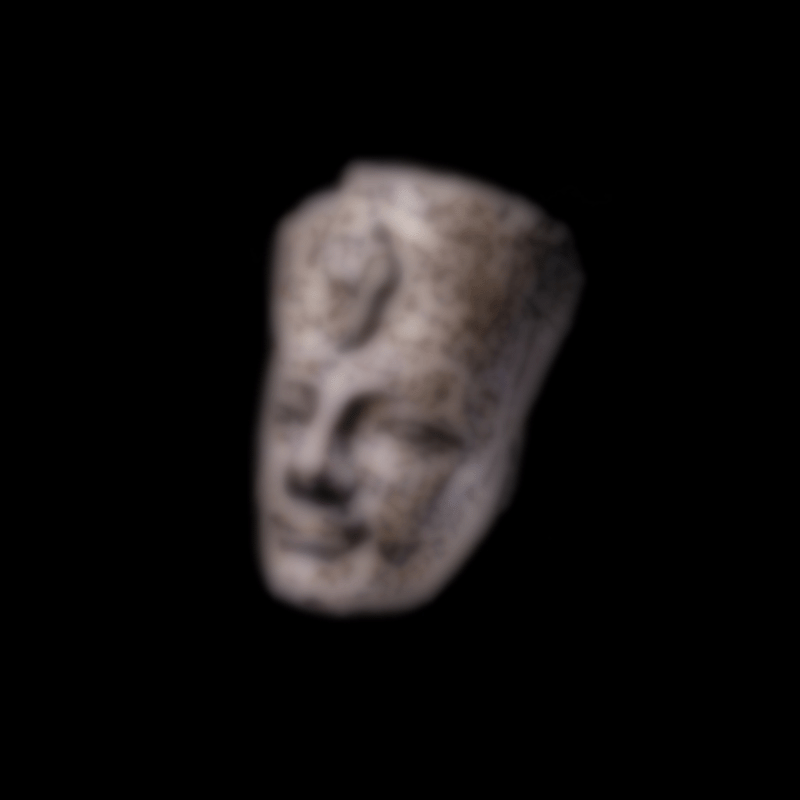
Animation: Symmetry axes and orientation points
For the following processing step, all recognizable symmetrical points of the face have been marked. Prominent symmetry points,
for example, are the eyes. By marking the center of the two eyes, then a line can be drawn horizontally from eye to eye,
In relation to the vertical symmetry axis, we can very well recognize the angle formed by the intersection. The mouth, or the
lips form at their ends two more points, which are suitable for drawing a further symmetry line. The nose, however, is
often unsuitable to set a reference point for an a symmetry axis. This is because the nose usually emerges a little bit from
the facial profile. A corresponding line through this point would indicate that other potential reference points are no longer
part the symmetry axis anymore. From an oblique view, the tip of the nose is a quite unfavorable orientation point, unless it
is a very flat nose.
If we mark further appropriate symmetry points, then we will quickly see that these symmetry points also have
the same angle to the rising vertical axis line. These symmetries can therefore be found in every stone face, unless there
aren't deformations caused by damage or artistic intentions to avoid a desired symmetry. As a rule, however,
a high degree of symmetry can be found.
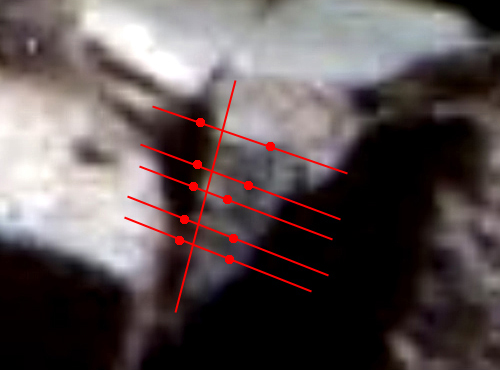
Symmetry points and their positions to each other
A remarkable symmetry can also be detected on another stone structure that is located on a recording of the Mars rover Opportunity
created at SOL-time 2161.
Reconstruction of the Human-like Stone Head with the Help of Morphing Techniques
If it were possible to see a stone face directly from the front, then it would give a much better idea of how
it looks as a whole and it would provide a better option for the interpretation of the used style .
It would now be possible to mirror the visible half of the face and to put them together so that they constitute a
complete face. However, this approach leads to hasty judgments that could turn out to be an optical illusion. If a rock
formation already gives the impression of a face, then mere mirroring would inevitably amplify this impression.
A rating of naturalness or artificiality based on a perceived face half may be well considered as very doubtful
method. Such an approach should be avoided. It would only be justified if the picture template
possesses a high degree of sharpness. But this is not the case in the given example.
Morphing techniques allow the creation of an animation that shows the smooth transition between two images. Since the underlying
image example shows more than half of the face, the use of morphing is justified to produce a natural-looking rotation of the head.
The symmetrical structure of the face was already explained above. Especially the fact that the outlines of a second eye can be
detected in the shadow area, is elemental for the morphing animation.
How well this actually works shows the animation of the stone head of Amenhotep the Third. With the help of the morphing techniques,
a very natural movement and a very vivid impression of the head has been created.
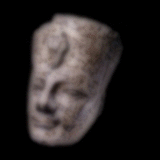
Animation: Calculated rotation of the sculpture template
of Amenhotep the Third
The following image shows the most salient points of the stone face that have to be marked. The output image has been mirrored
to produce a final image that is needed for the complete animation. In this particular case, the mirroring is therefore a permissible
means, since the short-range analysis has shown that we can see more than half of a face together with the second eye and the outline
of face half lying in the shadow. Without this, the morphing would not be possible because for the animated rotation
the symmetry points on both sides of the face must be marked.
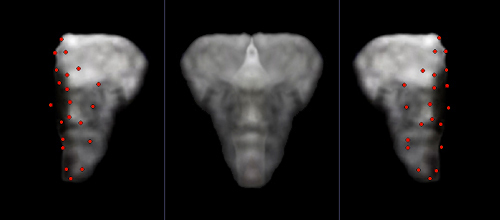
Marking of symmetry and midpoints
The use of morphing techniques provides an obviously three-dimensional presentation of the stone head. The generated rotation
imparts a much more plastic impression of the head. This fact promotes the search for possible counterparts
which may be found in our cultural history. Appropriate style studies and symbolic interpretations will be made separately
in another analysis report.
Animation: Rotation of the head with the help of morphing techniques
It should be mentioned that the exact shape of the headdress is not easy to determine. The shown animation
represents the very first version of an animated rotation on the basis of the first determination of prominent points.
Hiding of Compromising Images
The discovery of this amazing details came purely by chance. The structural anomalies are easy to
overlook and blend unobtrusively with its surroundings. Since that there are now more than one million
images available that have been created by the various Mars probes and rovers, it is almost inevitable
that "mistakes" are made. So if someone can find anomalies, then the main reason is that these were
overlooked in spite of control. Probably due to this fact the images were published.
When we talk at this point about clear evidence for artifacts of an extraterrestrial civilization, then
it must be also consequently understood, that the NASA will always try to hide revealing images.
Those people, who wonder why no clear traces of extraterrestrial relicts can be found on Mars images,
should be aware about the consequences, when a direct and uncompromising publication of such images
would be made.
This is the dilemma in which we are trapped ourselves. It is quite understandable that the lack of clear images
is seen as confirmation by sceptical people that theories about extraterrestrial visitors are completely bogus.
On the other hand, even as a sceptic one may understand that there wouldn't be any clear images, since
our society is not currently prepared to face such a truth. Above all, religious beliefs may cause
disastrous consequences, if a gradual sensitization of society does not take place on this issue.
The fear is just that probably no one is planning to perform an sensitization of society, because there
are other interests in the foreground. Whatever may be true,
the published analysis reports here could possibly provide a contribution to raise the awareness.
Skepticism is always warranted in this matter, but one should not assume that an all facts are always
available. This is the point where you must be willing to look outside the box.
|
